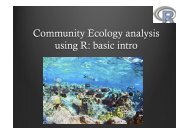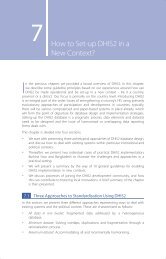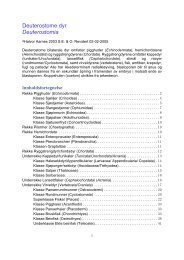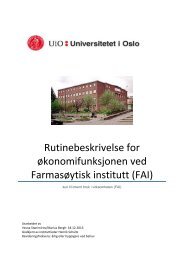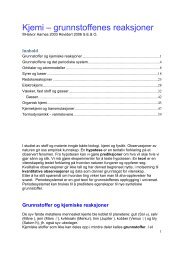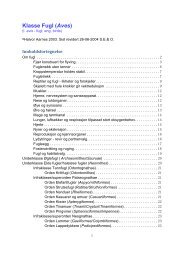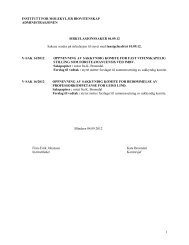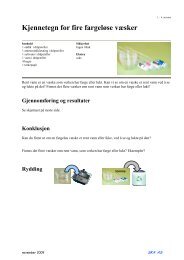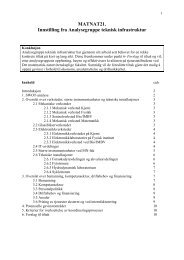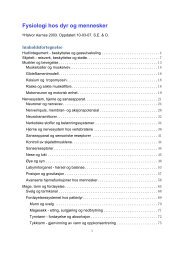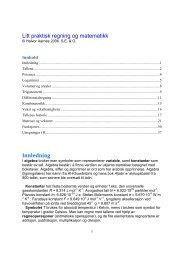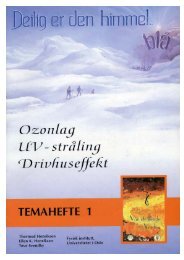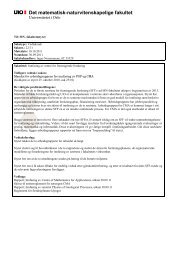Evaluation of individual research units - Norges forskningsråd
Evaluation of individual research units - Norges forskningsråd
Evaluation of individual research units - Norges forskningsråd
Create successful ePaper yourself
Turn your PDF publications into a flip-book with our unique Google optimized e-Paper software.
<strong>Evaluation</strong> <strong>of</strong> <strong>individual</strong> <strong>research</strong> <strong>units</strong><br />
Ecology<br />
Grading <strong>of</strong> scientific quality<br />
Good<br />
<strong>Evaluation</strong> <strong>of</strong> biology, medicine and health <strong>research</strong> in Norway (2011)<br />
Description <strong>of</strong> unit<br />
The ecology unit includes four <strong>research</strong> groups: biodiversity, systematics and evolution;<br />
wildlife management and ecology; plant-animal interactions; and environmental change<br />
biology. The latter three groups focus on both basic and applied ecological <strong>research</strong><br />
across a wide range <strong>of</strong> organisms and themes, whereas the former focuses on genetics and<br />
taxonomy. As <strong>of</strong> December 2009 the unit included 18 permanent staff and seven<br />
postdoctoral fellows.<br />
General evaluation & recommendations<br />
The current <strong>research</strong> plan and output is excellent. However a strategic framework for<br />
<strong>research</strong> and for flexibility among groups to encourage collaboration was not apparent.<br />
Continued provision <strong>of</strong> technical support also is important to ensure <strong>research</strong> productivity<br />
is maintained.<br />
If <strong>research</strong>ers are relieved <strong>of</strong> administrative duties, a more hierarchical structure is likely<br />
to result, and the department chair inevitably will make a greater proportion <strong>of</strong> decisions.<br />
Creating an advisory board <strong>of</strong> scientific peers, at least some <strong>of</strong> who are from outside the<br />
organisation, may help provide community and scientific support for such decisions.<br />
Most current staff members are fairly senior and are male. There may be opportunities to<br />
recruit more diverse personnel in the future.<br />
Societal impact<br />
Topics <strong>of</strong> <strong>research</strong> are directly relevant to societal decisions.<br />
Forest Resources<br />
Grading <strong>of</strong> scientific quality<br />
Good<br />
Description <strong>of</strong> unit<br />
Three <strong>research</strong> groups are included within Forest Resources: forest inventory and<br />
monitoring, wood science, and silviculture. Each group has two permanent academic<br />
staff.<br />
Forest inventory and monitoring develops methods for comprehensive mapping <strong>of</strong> forest<br />
resources at multiple spatial scales and resolutions. The group has considerable expertise<br />
in combining ground data with LIDAR data and is the only academic forest-inventory<br />
group in Norway. The wood science group focuses on the effects <strong>of</strong> tree growth on wood<br />
properties, including wood formation and silviculture, and its relation to wood chemistry<br />
and morphology. The silviculture group focuses on models <strong>of</strong> tree growth, forest<br />
inventory, forest management planning, potential use <strong>of</strong> forest biomass for energy, and<br />
reduction <strong>of</strong> emissions from deforestation and degradation (REDD).<br />
17




